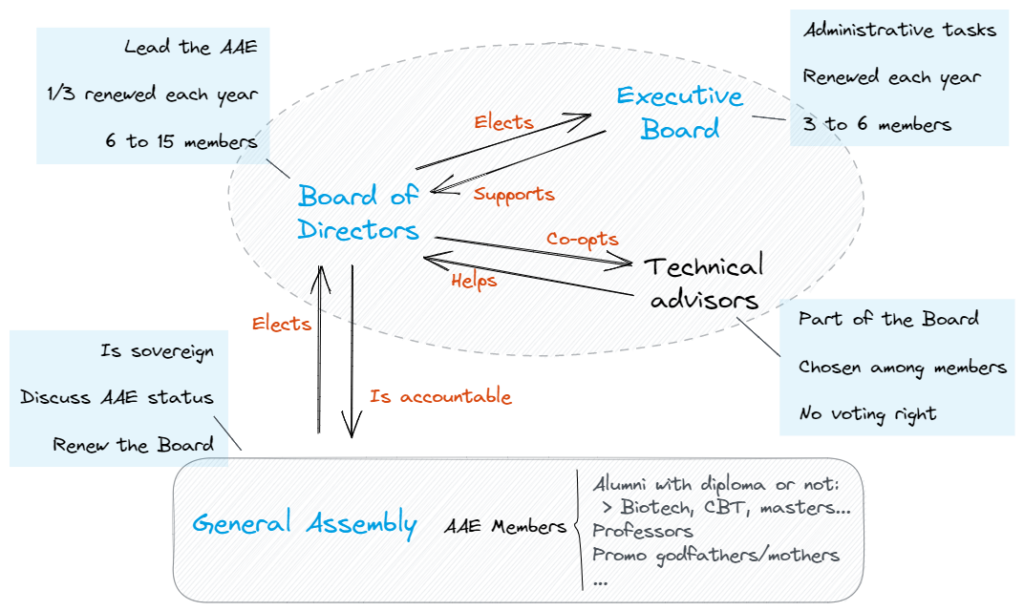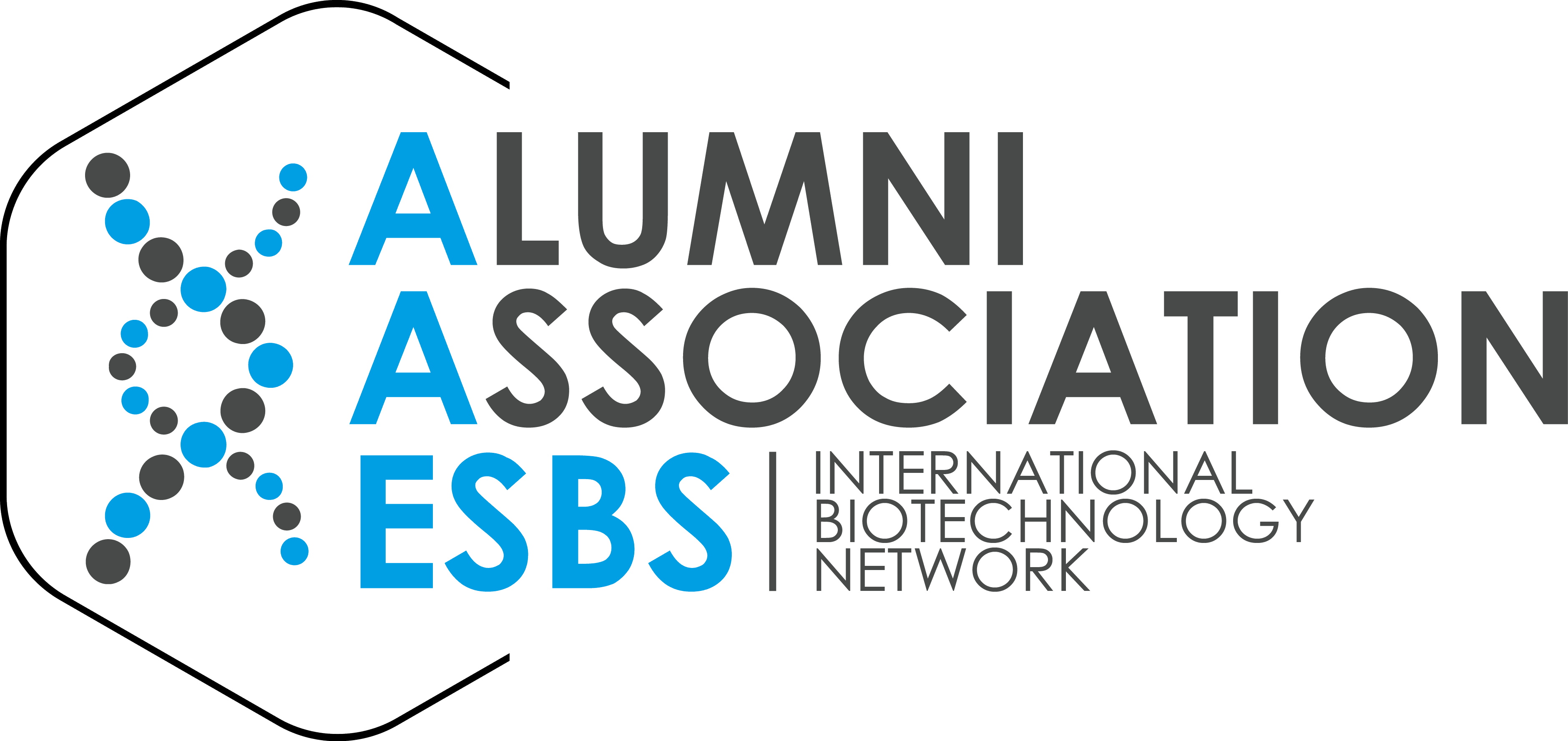Structure of the AAE
The AAE has a classic structure with a General Assembly (GA), a Board of Directors (BoD) and an Executive Board. The former decides the strategy, the second leads the association and organizes its activities, while the third has only an administrative function. This aims to regroup the most volunteering members in the same body without having a hierarchical structure.
Don’t forget to take a look at the missions of the AAE!

Relationships between the structural bodies
The association is organized into 3 structures defined by the AAE statutes.
The main relationship is between the General Assembly, so-called “the Assembly” and the Board of Directors, “the Board” or “BoD”. Each year in the fall, all members of the association gather at the General Assembly to discuss the life of the association. The members are ESBS alumni, regardless of their diploma, and other people related to the ESBS.
During the meeting, the President and the Treasurer present the activities, results and plans of the Board on its behalf. The Board is accountable for its own actions because the Assembly can dismiss the President or the Treasurer if necessary at this moment. The Assembly then discusses the other resolutions which are presented by the Board or by the association members. It has also other checks and balances such as to dismiss Directors or invalidate Board decisions. Finally, the Assembly elects the members that applied to join the Board.
Besides these democratic activities, the General Assembly is also a special moment to spend time together!
The second relationship is between the Board of Directors and the Executive Board. The latter is not an organized body such as the former, because its goal is mainly to provide coordination and administrative support to the Directors. The Executive Board is made of the association President, Treasurer and Secretary, as well as their deputies. They are Directors as the other Board members and do not take more decisions than the other Directors. This enables a more horizontal hierarchy. Yet, the Executive Board represents the association and has critical administrative responsibilities.
Organization of the Board of Directors
We abbreviate the Board of Directors as “the Board” because it is the head of the association. The goal is to regroup the volunteers that lead and achieve projects in the same body, without further hierarchy.
The Directors are elected for 3 years by the General Assembly, such as one third of the Board is renewed each year. For example, if there are 15 Directors, which is the maximum number of chairs, then there are at most 5 chairs to renew. This ensures a continuity of the Board after each renewal. The election process is complex if there are more candidacies than chairs. Otherwise, each candidacy is independently elected by the Assembly.
Moreover, we refer to “Directors” for the Board members that are elected by the Assembly, because the Board is also made of Technical Advisors. These are association members that are co-opted by the Board to take part in its work, but they only have a consultative voice. Being an advisor is a “first step” before joining the Board as a Director. The student associations (e.g. the Amicale and the NGB) are also Technical Advisors so they can be part of the Board meetings.
We aim that each Board member gains experience and enjoys serving the association. Without them, the Alumni network would not be a network. Meet the Board members here!
The Board has a meeting about every 3 months to assess the association activities, share out the projects and vote on financial or statutory matters. If the Board members have disagreements, it votes to settle the argument. Between Board meetings, the Board members have meetings dedicated to the projects on which they are involved in.
Finally, the Board members use mostly two tools: Discord to chat and talk as well as Google Drive to share documents and collaborate.
Functions of the Board members
The projects are chosen and shared out between Board members according to personal preferences. Usual continuous projects are for example communication management, web site management, feeding the jobs portal, newsletters, stammtisch support and public relations with the ESBS. In contrast, one-shot projects are the organization of the Alumni Day and the General Assembly.
These projects sum up with administrative tasks such as secretarial work (contact email), meeting management and accounting, which are done by the Executive Board. By default, the President also keeps regular contact with the Board members to follow their work and their availability for the association. And of course, at each General Assembly, the President and the Treasurer acts on behalf of the Board.
Only the Executive Board members have clearly defined tasks. The other Board members do not have a particular title as anyone can work on any project or task. We act in “stigmergy”.
